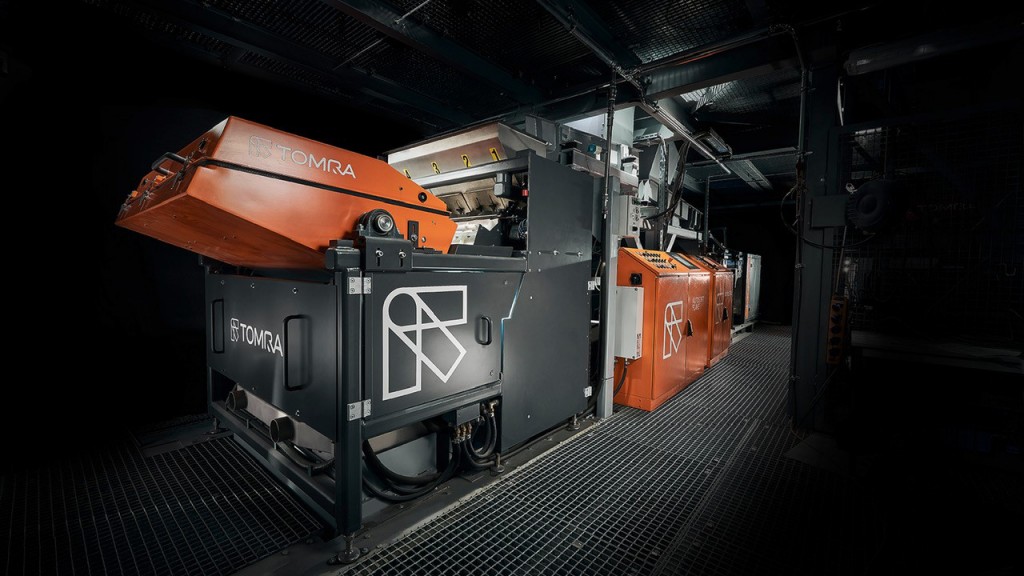
Due to the latest applications of TOMRA Sorting Recycling's sensor-based flake sorting solutions, customers are now achieving high recovery and purity rates of polyethylene (PE) and polypropylene (PP), both of which are polyolefins (PO).
Until now, the company's flake sorting solutions mainly focused on polyethylene terephthalate (PET).
The two optical flake sorting solutions - new INNOSORT FLAKE and AUTOSORT FLAKE - form part of TOMRA's Symphony of all Sorts concept. TOMRA Sorting Recycling's latest generation AUTOSORT and its products work together to create a symphony to sort all kinds of waste at advanced levels of accuracy and sophistication. Together the new INNOSORT FLAKE and AUTOSORT FLAKE add the ‘sounds of pure flakes' to TOMRA's Symphony.
Flake sorting is the final stage in the bottle sorting process and takes place once the infeed material has been shredded, screened, washed and dried. Historically, TOMRA Sorting Recycling's flake sorting capabilities focused on the recovery of PET flakes from mixed plastics. Through improved performance of the new INNOSORT FLAKE, TOMRA now offers a full optical sorting line consisting of both bottle and flake sorting for polyolefins (PO). AUTOSORT pre-sorts the material, and INNOSORT FLAKE is used for flake sorting.
"TOMRA is deeply committed to advancing the circular economy, and our new technology will open new doors to continue leading the resource revolution," says Carlos Manchado Atienza, regional director Americas for TOMRA Sorting Recycling. "For years, the industry only looked for high-purity PET recycling, but now TOMRA has demonstrated that even recycled PO can be made to the quality of virgin material."
Previously, INNOSORT FLAKE offered a total width of either 39.4 or 59.1 inches (1 or 1.5 meters) and was designed solely for PET flake sorting. The new INNOSORT FLAKE is 78.7 in (2 m) wide and uses TOMRA's Near Infrared (NIR) FLYING BEAM PO-specific and Dual Full-Color Camera technology to deliver high throughput. FLYING BEAM is the only NIR technology on the market that offers automatic continuous signal correction to deliver the most stable and reliable sorting performance, along with the lowest maintenance and energy consumption.
The new NIR sensor technology offers a unique solution for PO applications. PO flakes are sorted by material and color, and the PO-specific sensor used in our FLYING BEAM patented technology works in unison with the dual, full-color camera technology to gather enough spectral information to accurately sort PP and PE flakes as small as 0.079 in (2mm). Using a front and rear camera set up allows INNOSORT FLAKE to see the color of each flake and identify the most minute details, such as prints or ink. The unit purifies both the PE stream and the PP stream by identifying and removing the unwanted polymer contamination, as well as color impurities. Any left-over contaminants are removed, resulting in unparalleled purity levels that meet both the standards demanded by current industry legislation and end customers.
For high-end applications such as bottle-to-bottle recycling, where contamination of the infeed material is low, but quality requirements are high, TOMRA Sorting Recycling also offers AUTOSORT FLAKE. AUTOSORT FLAKE simultaneously detects material, color and metal to achieve both extremely high purity and stable throughput.
Valerio Sama, head of product management at TOMRA Sorting Recycling, comments: "With the use of polyolefins continuing to rise - the global polyolefins market is predicted to reach close to US$4 billion by 2027 - sorting polyolefins will become an increasingly important realm of plastics recycling. We need to be able to increase the purity and yield of recycled plastics to a level where
the material is suitable for re-use in food packaging, and we also need to bring that material back into the loop as part of a circular economy model.
"PE and PP are both polyolefins and, if mixed up together, they negatively impact the recycling process. Separating PE and PP is a complex challenge even for sensor-based sorting technology, but we set out to develop a new NIR sensor specifically for this application. With the launch of our new INNOSORT FLAKE, we've further strengthened our position as the ‘go to' technology provider for plastic flakes and have added the ‘sounds of pure flakes' to TOMRA's Symphony. Our customers can further rely on us as a ‘one stop shop' for all their bottle and flake sorting needs. But we don't just sell the technology. Rather, we offer our customers in-depth application knowledge, invaluable consultancy expertise and ongoing service support."
Valerio concludes: "Our focus remains on continual improvements to our sensor-based sorting performance - driving higher capacity, higher efficiency and lower loss rates. We're currently looking into developing a solution for PVC sorting and look forward to sharing more details about this project in due course."



